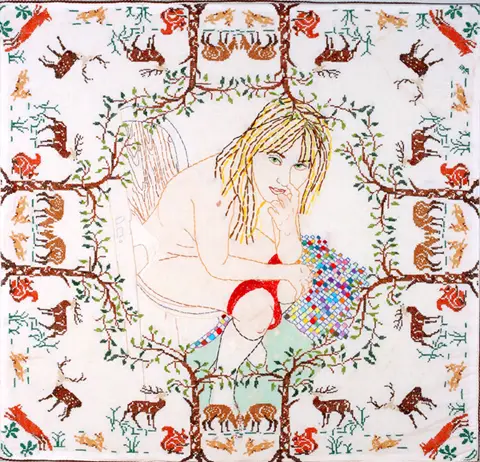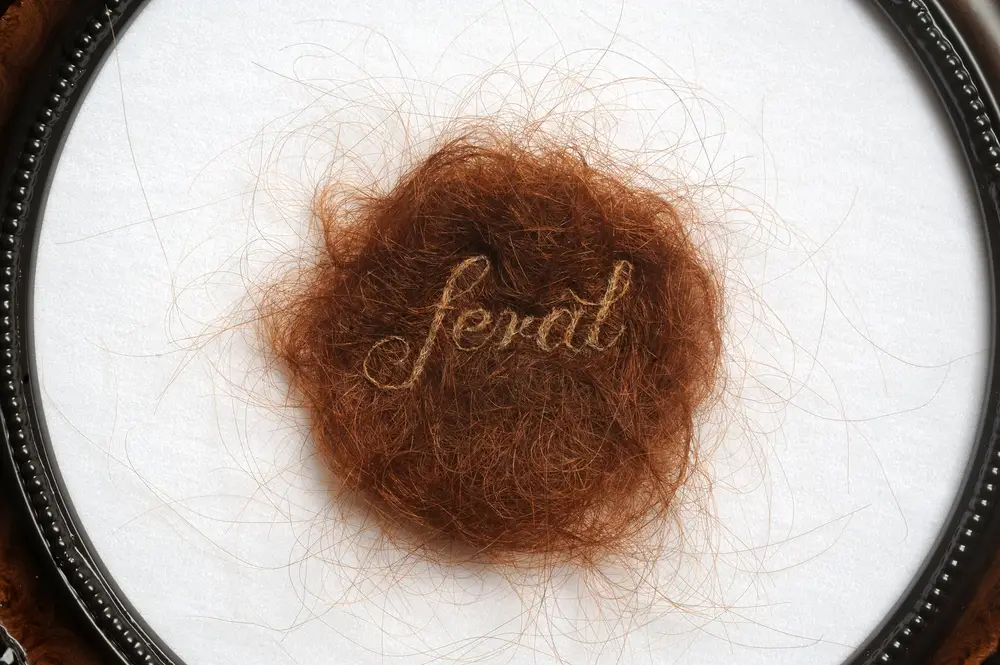Kate Crossley is a textile artist from Oxford whose textile art challenges the norm with bold exploration of form.
“I love to use the medium that speaks to me at that moment and is best suited to the idea, I use paper, fabric, stitch, paint, dye, photo transfer, fibre etch, paper mache, resin and found objects. The piece may become a quilt, a wall hanging, a box or a book.
“Ideas of layering, wrapping and preserving are returning themes, I often build up layers of fabric and embroidery only to use acid on the surface to burn away parts to reveal detail underneath, a sort of artist’s archaeology.
“I enjoy telling a story, of things that have gone before and of objects that have become precious and have a story to tell. Although my work often has a strong personal theme this is not always obvious; it is important to me that my work allows the viewer the space to invent and interpret the work for themselves.
“All of my work contains some elements of stitch and textile. I mainly use a Janome machine and a Juki machine for free machine embroidery and with my newest purchase, a New English Quilter which allows me to use my Juki more like a long arm quilter. I love to use free machine embroidery, especially for adding text, combined with patchwork and quilting. I often work in multiple layers, burning back the surface with devore paste to create exciting new fabrics and unusual, aged surfaces.
“I use various weights of calico cotton, muslins and scrim, lots of pure silk, especially dupion, alongside recycled fabric. For thread I use a pure silk and really love Texere’s brilliant selection. Most work starts off white or cream and I like to use walnut ink, Procion and natural dyes to colour recycled fabric. I also use different photo transfer methods. Bubble Jet Set is wonderful to use if you want to print directly onto fabric using an inkjet printer and Lesley Riley’s Transfer Artists Paper is lovely to use as you can draw and paint over images and distress the surface before you iron on to the fabric.
“I have also learnt simple mould-making and casting techniques as well as resin casting as sometimes I want multiple objects in a piece and this is the simplest way to reproduce a found object. Of course sometimes an object is simply too precious to use in a cabinet so a mould and cast allows me to go ahead and use it.
“After making “Clock” and winning the Quilt Creation section at the Festival of Quilts this year I was asked if it could go on display this March at the American Museum in Bath alongside some of their wonderful old clocks and quilts. They have a wonderful collection of quilts on display and this year are hosting an exhibition Hatched, Matched, Dispatched – & Patched! An exhibition featuring quilts and garments associated with birth, marriage and death which looks amazing. I will also be running some workshops at the Museum the first is on May the 9th.“
Kate is fearless in her exploration of the textile form. Her huge sculptures are created with an array of printing and embellishment techniques that are quite frankly, mind boggling.
I discovered Kate’s work last year, and was blown away by the chrysalis piece in particular. Her art is packed with narrative and and you have to take time to fully explore her work. Whether it’s digital printing, resin work or soft sculpture, there are loads of techniques to be enjoyed. The fabric force is indeed strong in this one.
I love art like this, where you’re forced to take time out to properly engage with it. Visit Kate’s website to keep up with where you’ll be able to see the work for yourself.












